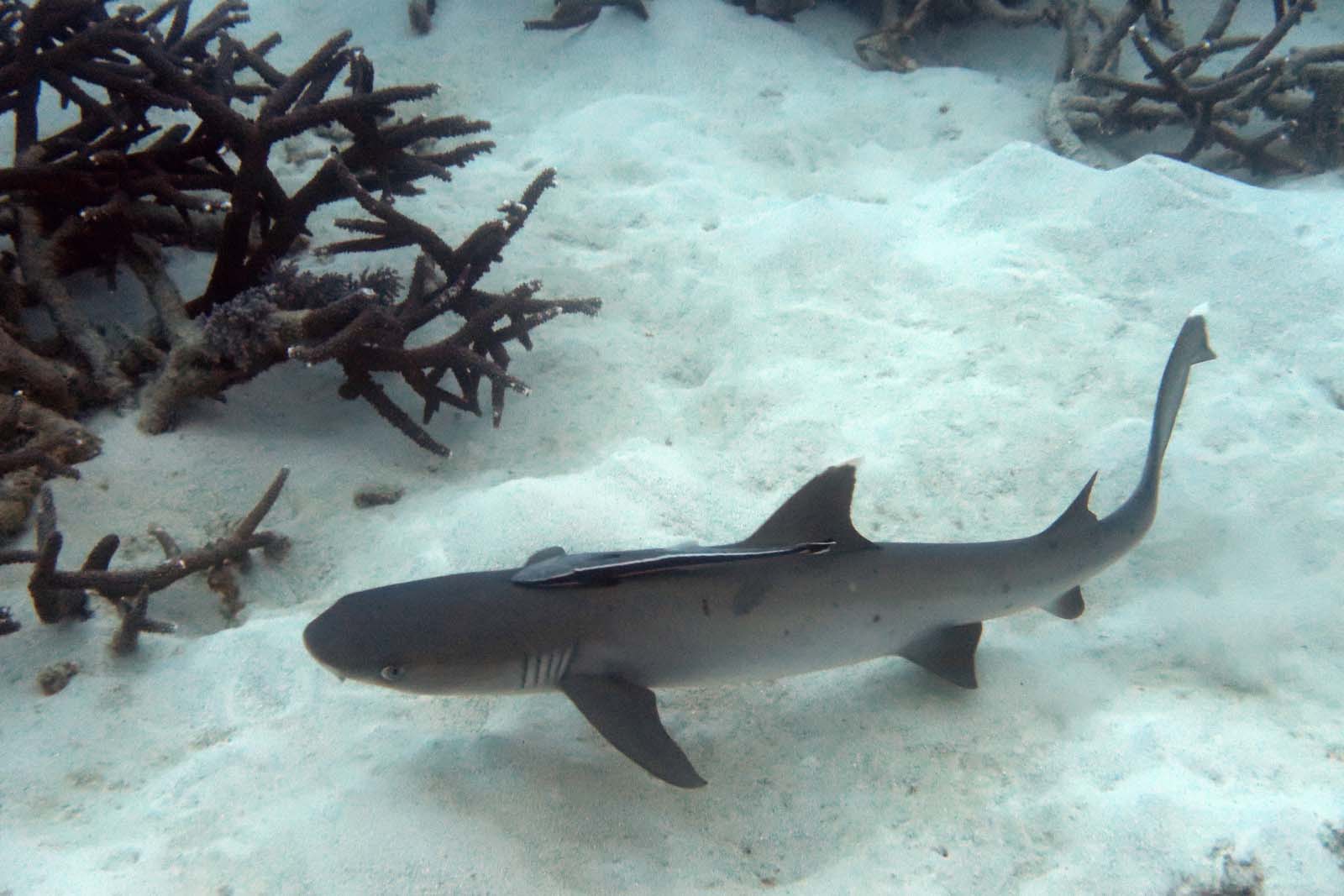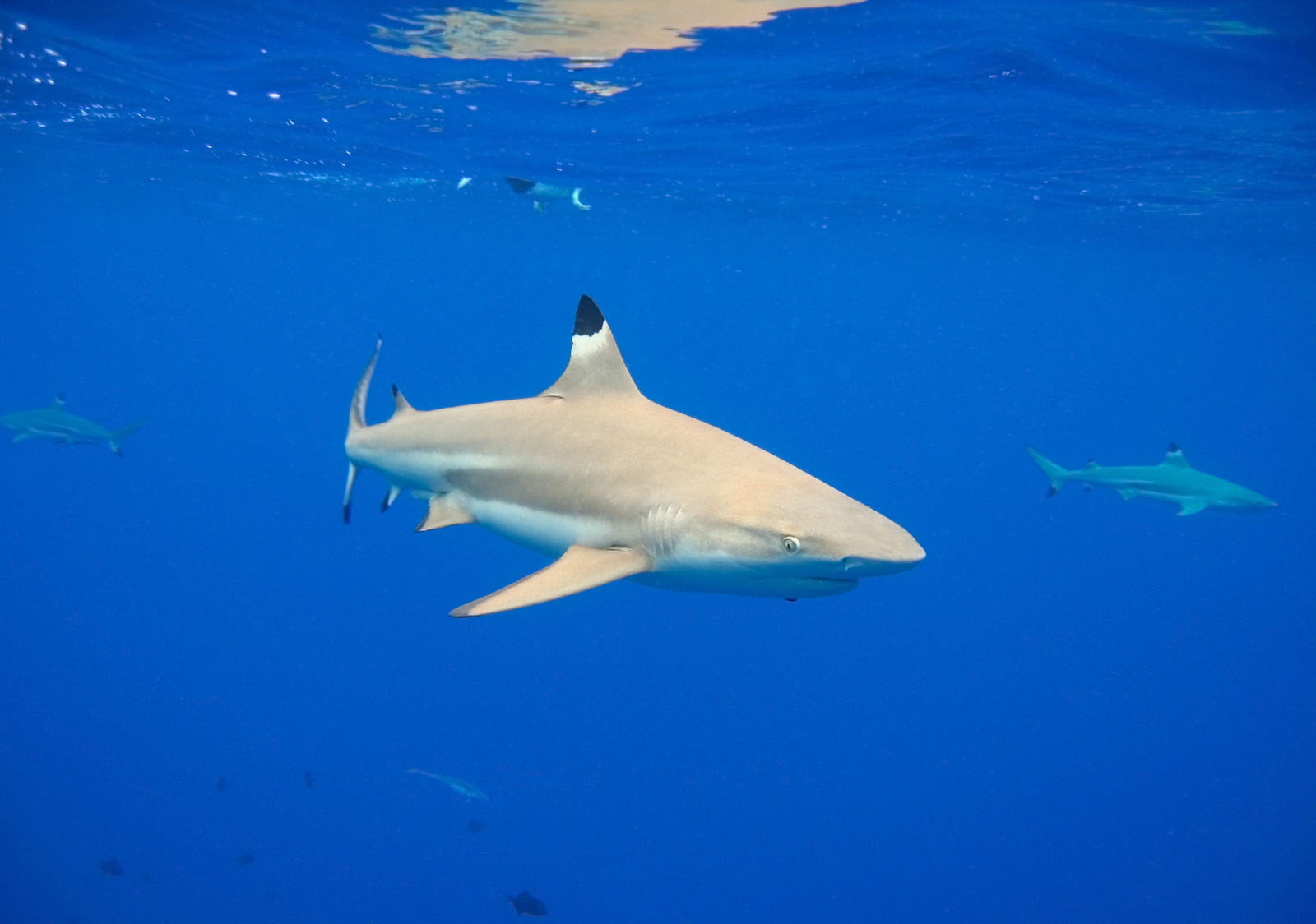
Embarking on an Underwater Odyssey with Galapagos Sharks | Travel Blog
Unlocking the Mysteries of Galapagos Shark Species
Welcome to the captivating realm of Galapagos sharks, where the azure waters cradle an astonishing array of marine life. A tapestry of thirty-two distinct shark species gracefully maneuvers through the protected waters of the Galapagos Marine Reserve, finding refuge and sustenance in this biodiverse haven.
Nestled within the embrace of the Galapagos Islands, an extraordinary convergence unfolds. Cold nutrient-rich currents dance with the warmth of tropical waters, creating a mosaic of tropical, temperate, and cold-water habitats. This unique blend forms the backdrop for a rich tapestry of marine life, providing an ideal habitat for an impressive diversity of shark species. Some call these waters home throughout the year, while others embark on migratory journeys, synchronizing with optimal feeding times.
As recent as 2012, the Galapagos unveiled a new secret—a previously undiscovered catshark species. This revelation serves as a testament to the continued mysteries waiting to be unraveled within the depths of Galapagos waters.
Table of content
Dive into the Heart of Galapagos Sharks
For those yearning for an up-close encounter with these mesmerizing creatures, a Galapagos Scuba Diving tour beckons. Immerse yourself in the underwater wonders, capturing awe-inspiring moments that will undoubtedly elicit envy from friends back home.
Specialized live-aboard dive yachts, such as the renowned Aggressor III and Galapagos Sky, chart courses to the premier dive sites at Darwin and Wolf islands. Here, the largest shark biomass on the planet awaits, averaging an astounding 17.5 tons per hectare. While these cruises may require an investment, they offer an exclusive gateway to witnessing Hammerheads and Whale Sharks in their natural habitat.
For the budget-conscious adventurer, Galapagos dive day tours provide an alternative. Sites like Gordon Rocks (Santa Cruz island) and Kicker Rock (San Cristobal island) offer glimpses of white and black tip reef sharks, as well as the elusive Galapagos Shark. Scalloped hammerheads occasionally grace these waters, creating memorable moments for enthusiastic divers.
Snorkeling Symphony with Galapagos Sharks
Not a certified diver? Fret not, as Galapagos sharks reveal themselves during snorkeling escapades. Reef sharks gracefully navigate the shallows around coral formations, offering enchanting encounters. With a stroke of luck, you might even spot a lone Hammerhead patrolling clear waters.
Galapagos cruises and land tours seamlessly integrate snorkeling into daily activities. Prime shark-spotting sites include Los Tuneles (Isabela island), Darwin Bay (Genovesa island), and North Seymour, promising unforgettable underwater spectacles.

Navigating Safely with Galapagos Sharks
In a history spanning back to the mid-1800s, only eight shark-related incidents have been documented in the Galapagos Islands. Tourists were involved in just three of these incidents, and remarkably, there hasn't been a single fatality resulting from a Galapagos shark encounter.
While caution is advised when sharing waters with sharks globally, the Galapagos Islands are widely regarded as a safe shark destination. To enhance safety, snorkeling and diving are recommended with experienced naturalist guides who can interpret shark behavior. Respect for their space and maintaining a safe distance are paramount. If a shark displays curiosity, allowing it to approach ensures a harmonious coexistence.

Explore the Diverse Galapagos Shark Species
Galapagos Hammerhead Shark: Flourishing at Darwin & Wolf Islands, optimal sightings occur from December to April.

Whitetip Reef Shark: Ubiquitous across the archipelago, active throughout the year.

Galapagos Shark: Thriving at Darwin & Wolf Islands, a year-round presence.

Whale Shark: Majestic sightings at Darwin & Wolf Islands, especially during the whale shark season from June to November.

Blacktip Reef Shark: Widespread across the archipelago, active all year.

Galapagos Bullhead Shark: Scattered across the archipelago, active year-round.

Tiger Shark: Captivating appearances at Darwin & Wolf Islands, and occasionally in the Itabaca Channel, with peak sightings from February to June.

Dusky Shark: Consistently spotted at Darwin & Wolf Islands year-round.

Silky Shark: Occasional visitors to the Galapagos Marine Reserve, more prevalent from January to April.

Championing Conservation for Galapagos Sharks
While the Galapagos Islands stand as a sanctuary for sharks, certain species face threats. The protective status within the Galapagos Marine Reserve has contributed to healthy shark populations. However, challenges persist, especially concerning illegal fishing practices, particularly for shark fins.
Ecuadorian protective laws, including the establishment of the Galapagos Marine Reserve, have played a pivotal role. The Special Law for Galapagos in 1998 and subsequent bans on shark product exports in 2004 demonstrated commitment to global shark conservation. Yet, challenges surfaced in 2007, permitting the export of shark fins from incidental catches, emphasizing the ongoing need for vigilance.
Instances of illegal fishing, as evidenced by a Chinese vessel in 2017 and a large fishing fleet near the Galapagos Marine Reserve border in 2020, cast shadows on conservation efforts. These incidents highlight the challenges of monitoring and enforcing protective regulations across the expansive Galapagos Marine Reserve.
The Perpetual Dance of Galapagos Sharks
The breathtaking underwater realm of Galapagos sharks continues to captivate, offering a sanctuary for these remarkable creatures. While the Galapagos Marine Reserve stands as a beacon of hope, ongoing efforts are crucial to safeguarding the diverse shark species that grace these waters.
If the allure of Galapagos sharks piques your interest, delve into our other blogs exploring Galapagos birds, animals, and the magnificent whales that frequent these pristine waters.
In conclusion, the Galapagos Islands unveil a myriad of shark species awaiting discovery. Beyond being home to the planet's highest shark biomass, Galapagos is a sanctuary where the dance with sharks is both safe and exhilarating. So, don your fins and snorkel, and plunge into the wonders that Galapagos sharks unfold on your next extraordinary adventure!
Check Our Galapagos Cruises:


